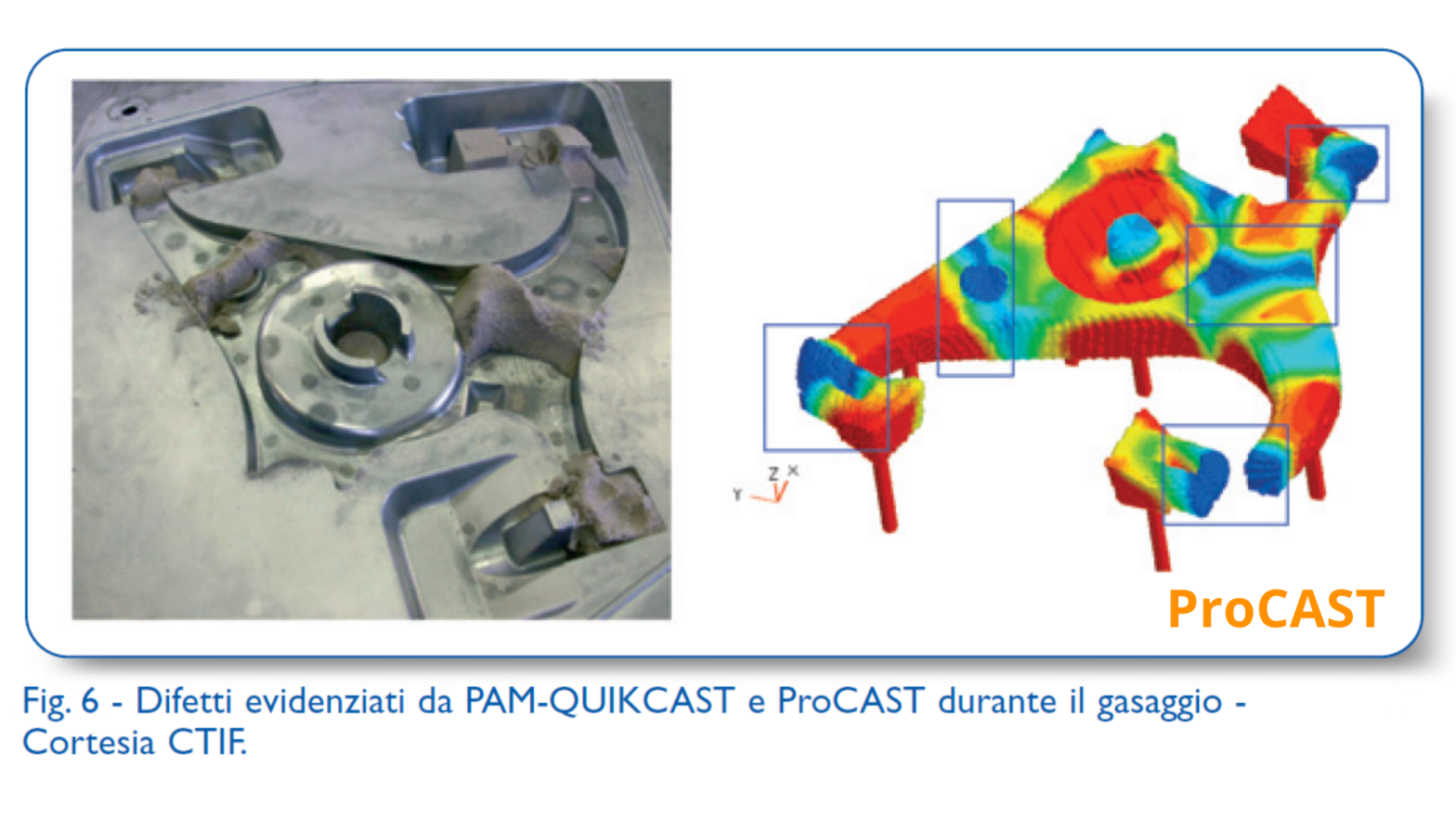
The OPTIBLOW project was ordered by the European Commission under the "Competitive and Sustainable Growth" program (1998-2002) and was coordinated by CTI - Castings Technology International (UK).
This project was born following the numerous and ever-increasing requests of Italian and European foundries and core blowers to solve the age-old problem of core production.
Article in Italian
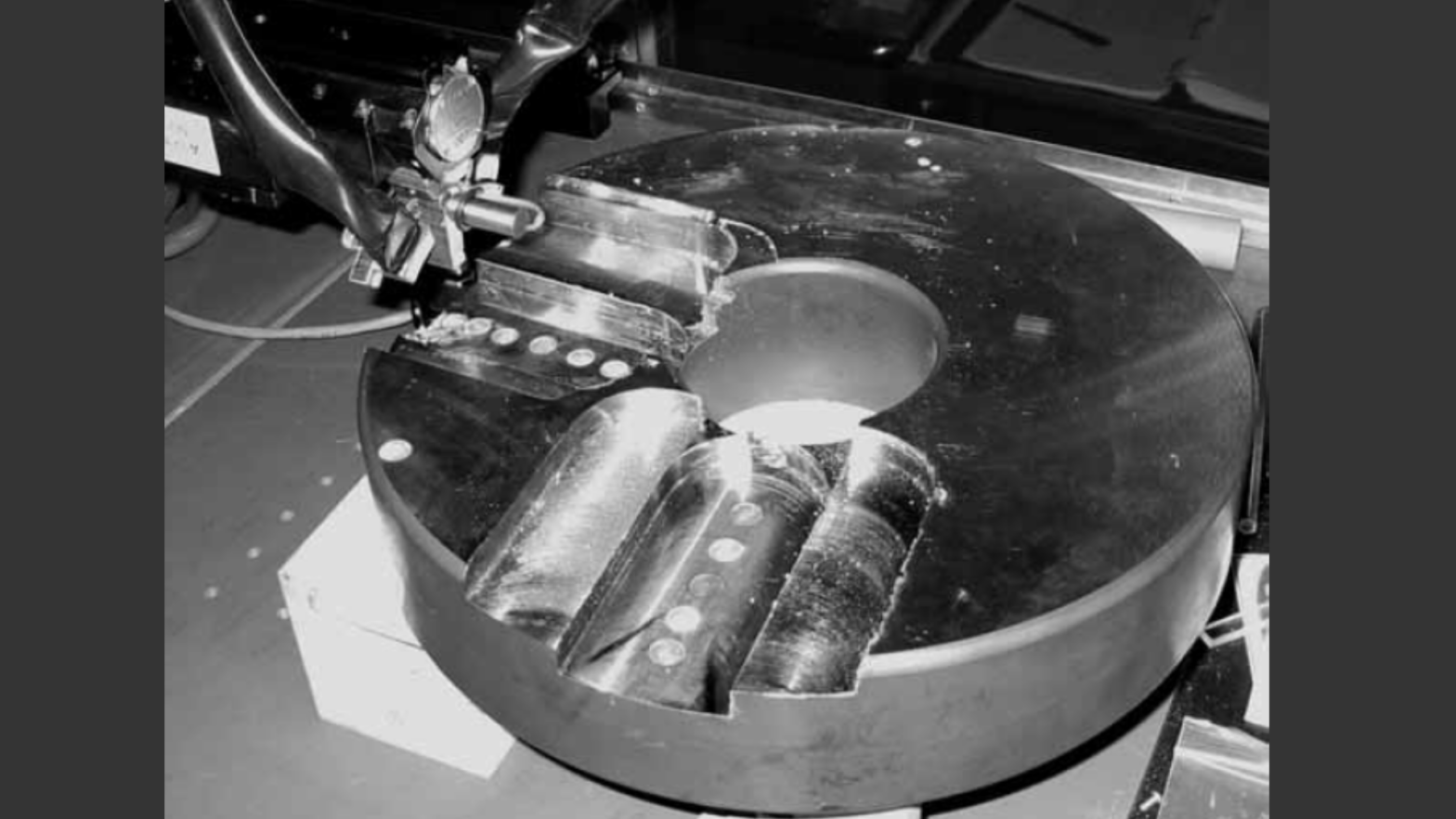
Significant improvements in manufacturing processes have been made by process simulation tools such as DEFORM (Scientific Forming Technologies Corp.). In the inverse calculation, the error between the measured shear forces and the forces predicted by DEFORM is minimized using an optimization approach. DEFORM is able to simulate the mechanical machining process in transient or stationary mode.
Read More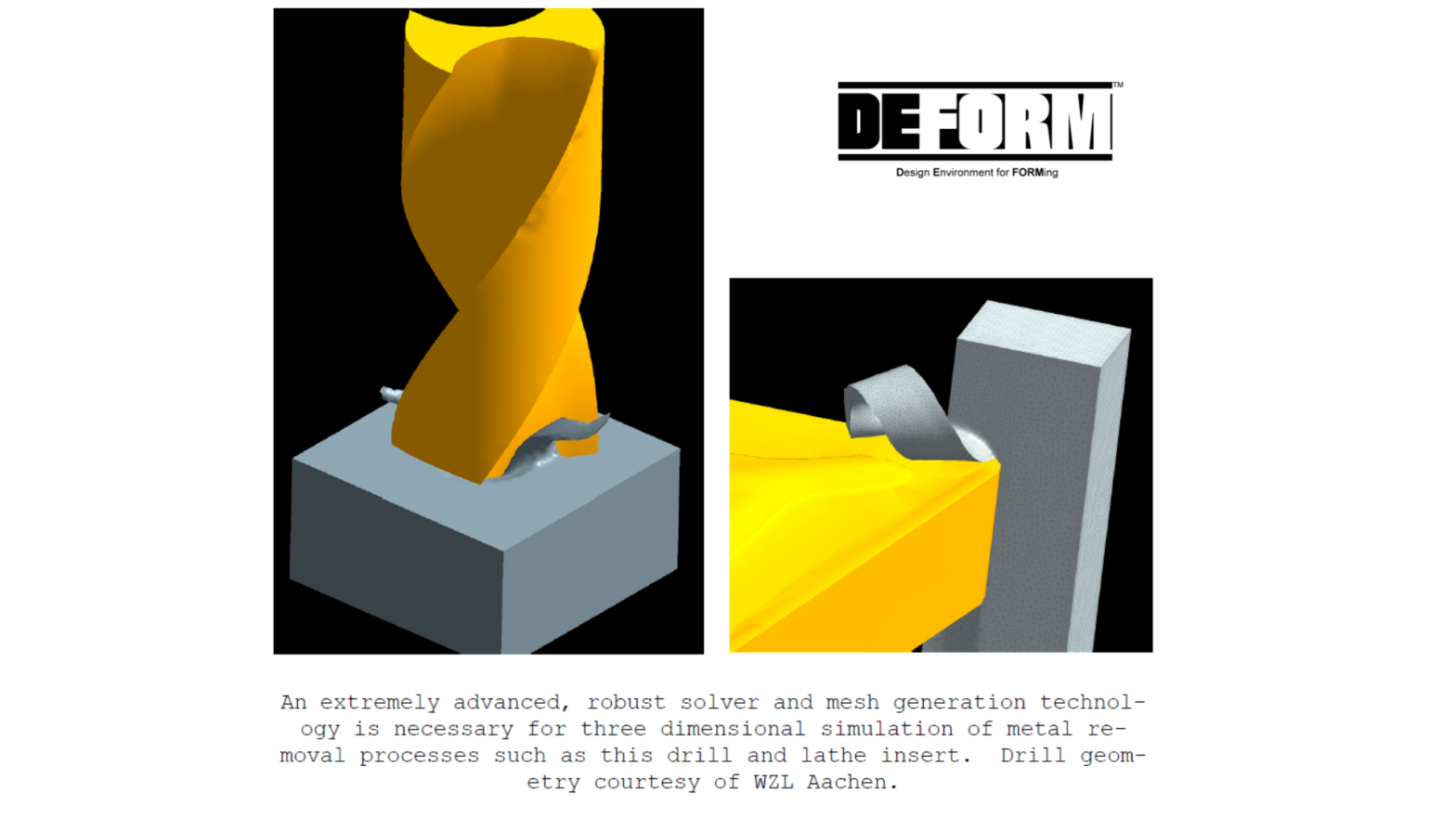
Prof. Ceretti and her coworkers at the University of Brescia in Italy validated the use of 3D simulations in 1999, comparing the results of a DEFORM™-3D orthogonal turning simulation to previously validated DEFORM™-2D plane strain simulations.
Subsequent simulations were conducted to replicate the oblique cutting experiments performed by Ueda at Kobe University in Japan. The simulation results correlated well with the published experimental results.
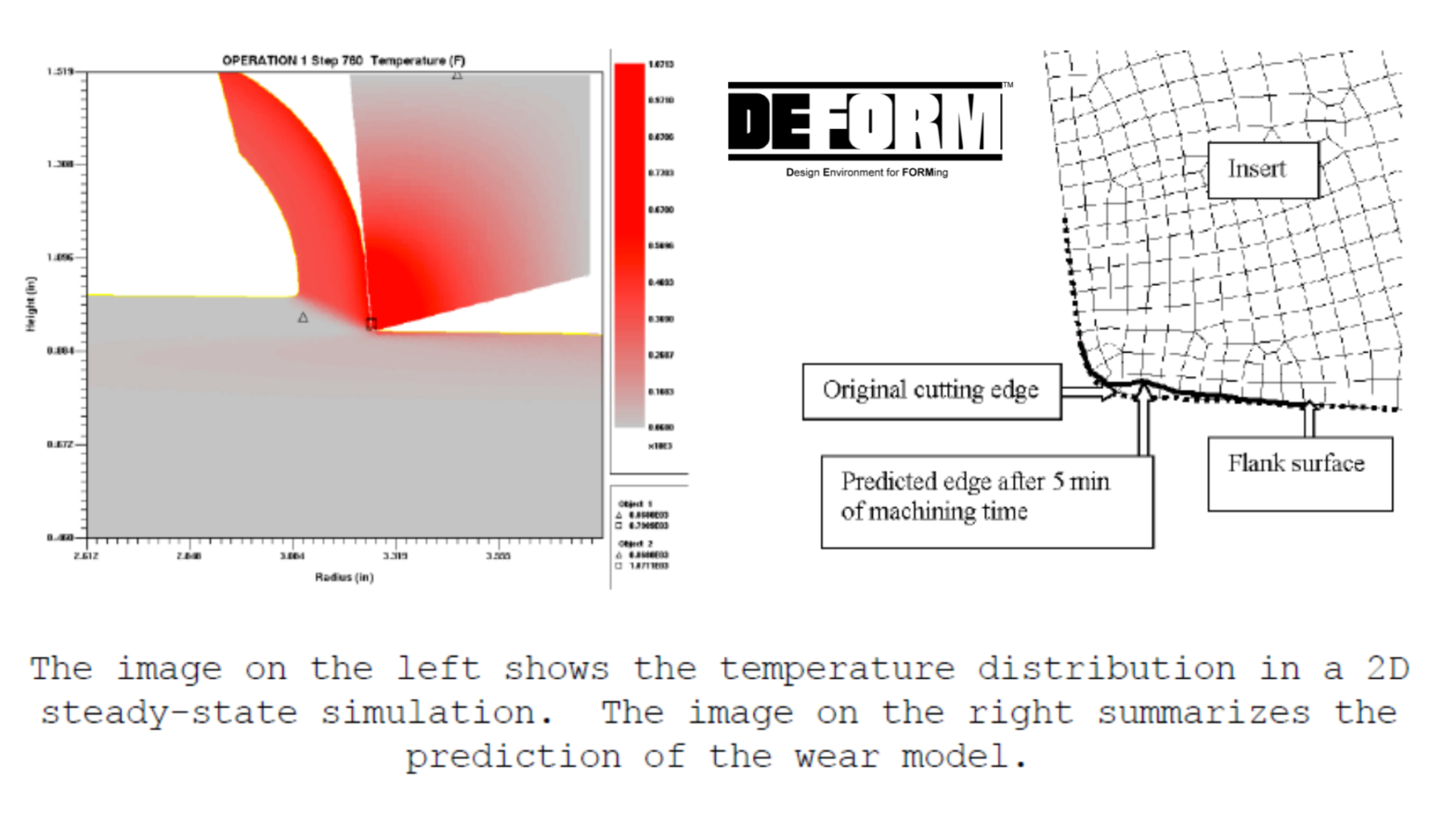
DEFORM™-2D has been used by researchers to implement wear models that relate tool wear to temperature, stresses and the sliding velocities that occur at the tool/chip and tool/workpiece interfaces. Based on the experimental wear data and the prediction of process variables by DEFORM™-2D, successful prediction of tool wear and tool life has been reported from Ohio State University.
In this work, a combination of measured and simulated values were used to predict the constants of a Usui’s (Usui, 1978) wear equation. The wear rate equation used in this study is given as follows.
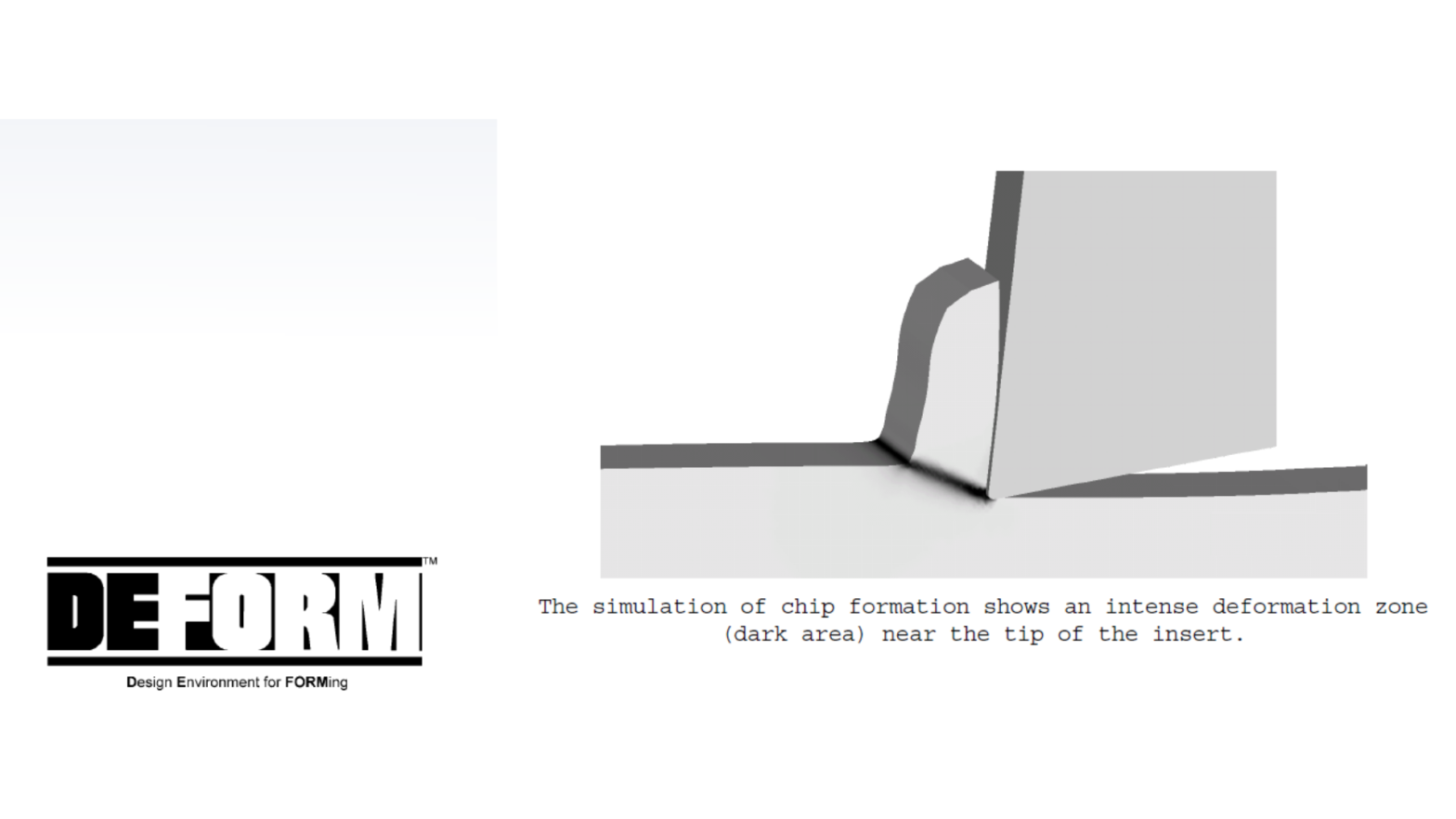
Continuing advances in high performance cutting have placed ever increasing demands on cutting tools.
The design of these cutting tools influences the efficiency of material removal as well as the surface finish of the part.
New computer simulation technology reduces the amount of experimentation needed to test and optimize a new cutting tool, and thereby improves performance and time to market.
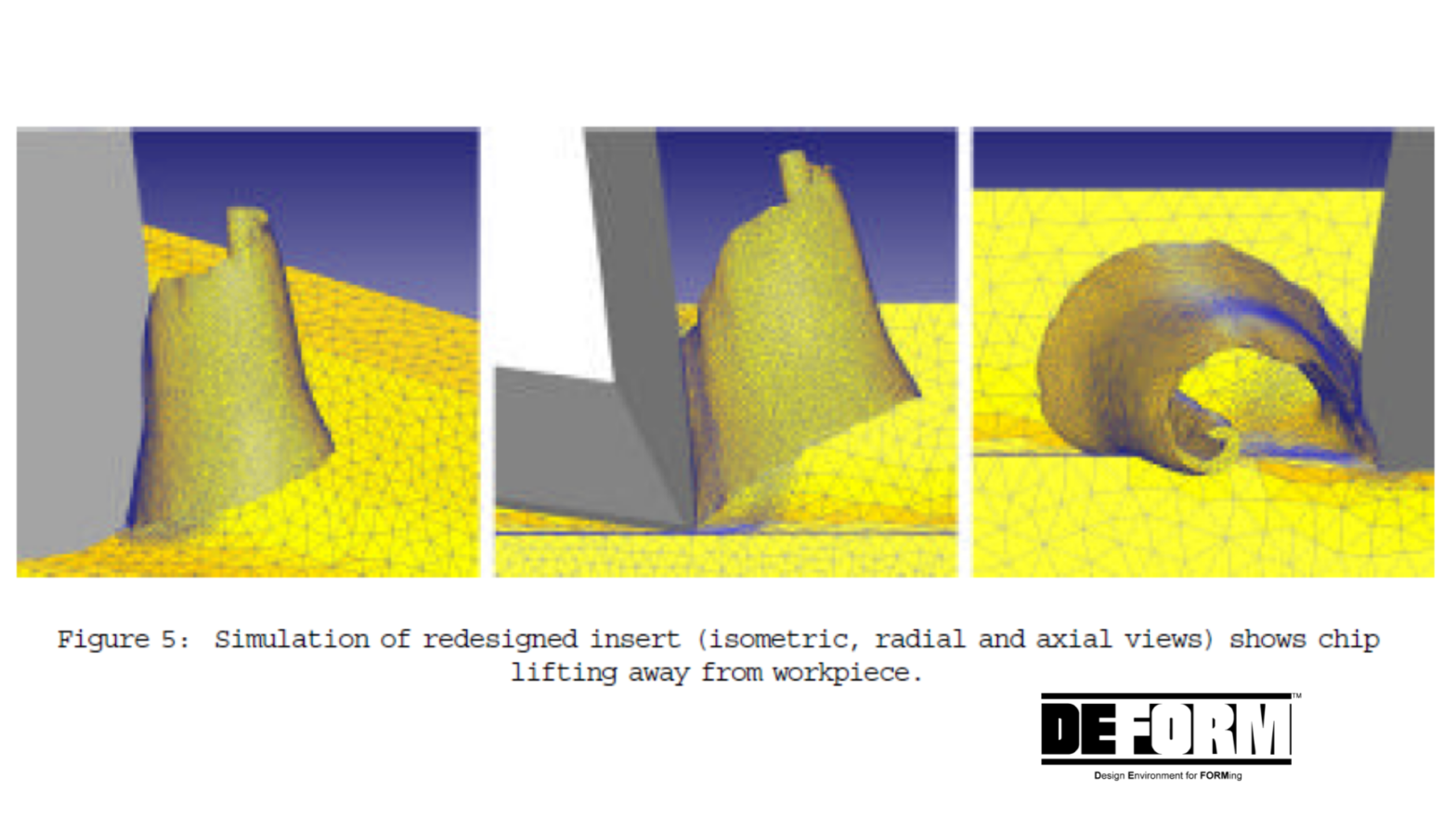
Kennametal used DEFORM™-3D simulation in conjunction with an experiment to study the effect of redesigns on a milling cutter insert.
The FIX PERFECT milling cutter with Polycrystalline Diamond (PCD) tipped inserts is a standard Kennametal product. It is used for machining aluminum alloys in the automotive and general machining market segment
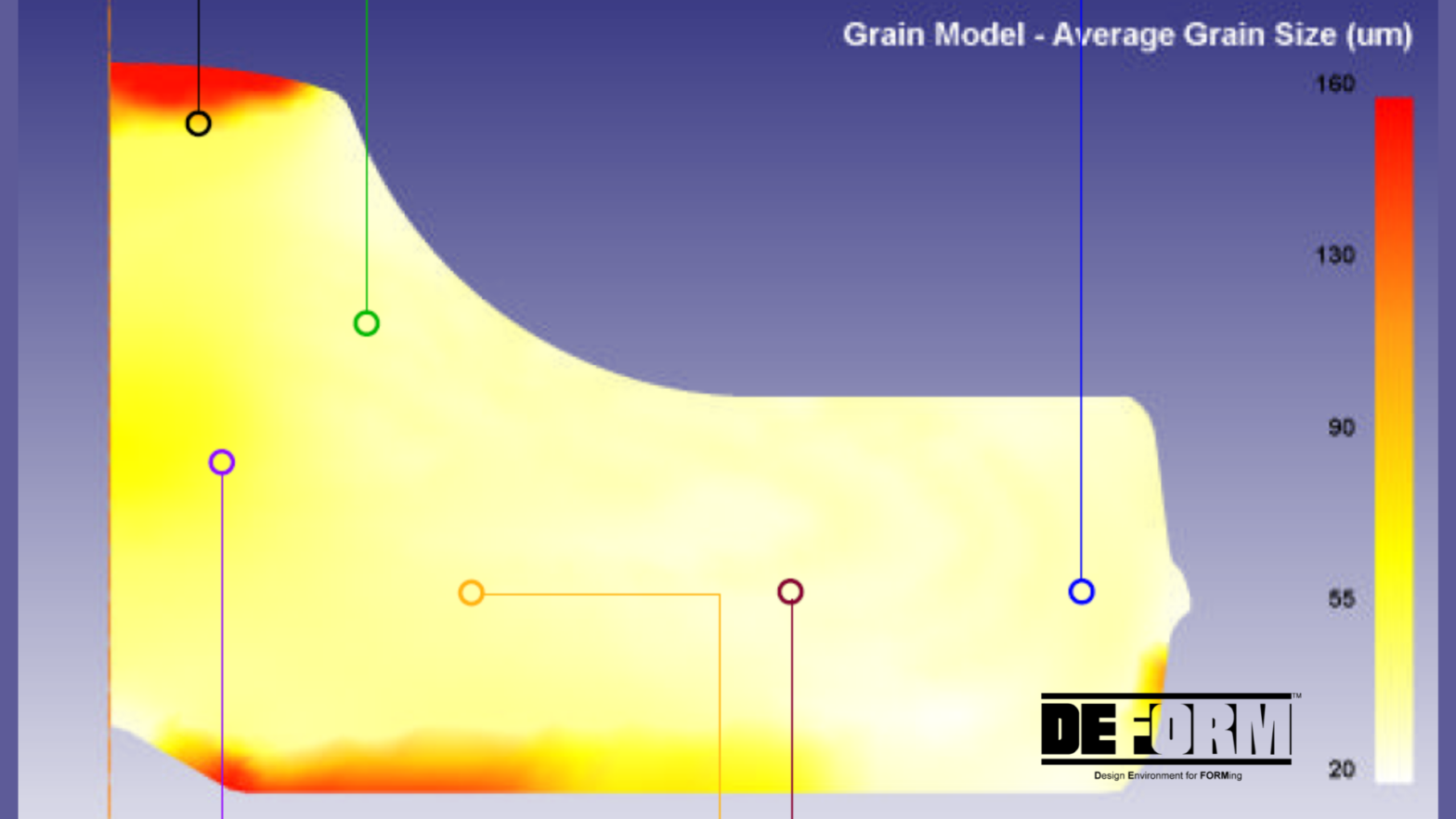
Carmel Forge, Israel, manufactures a wide range of titanium and nickel based alloy forgings for the jet engine and power generation industries. Carmel Forge uses DEFORM-2D, with the Microstructure module for their process development and optimization.
DEFORM has helped Carmel Forge to optimize their forging processes, lower production costs and significantly reduce the lead time between order placement and delivery of products.
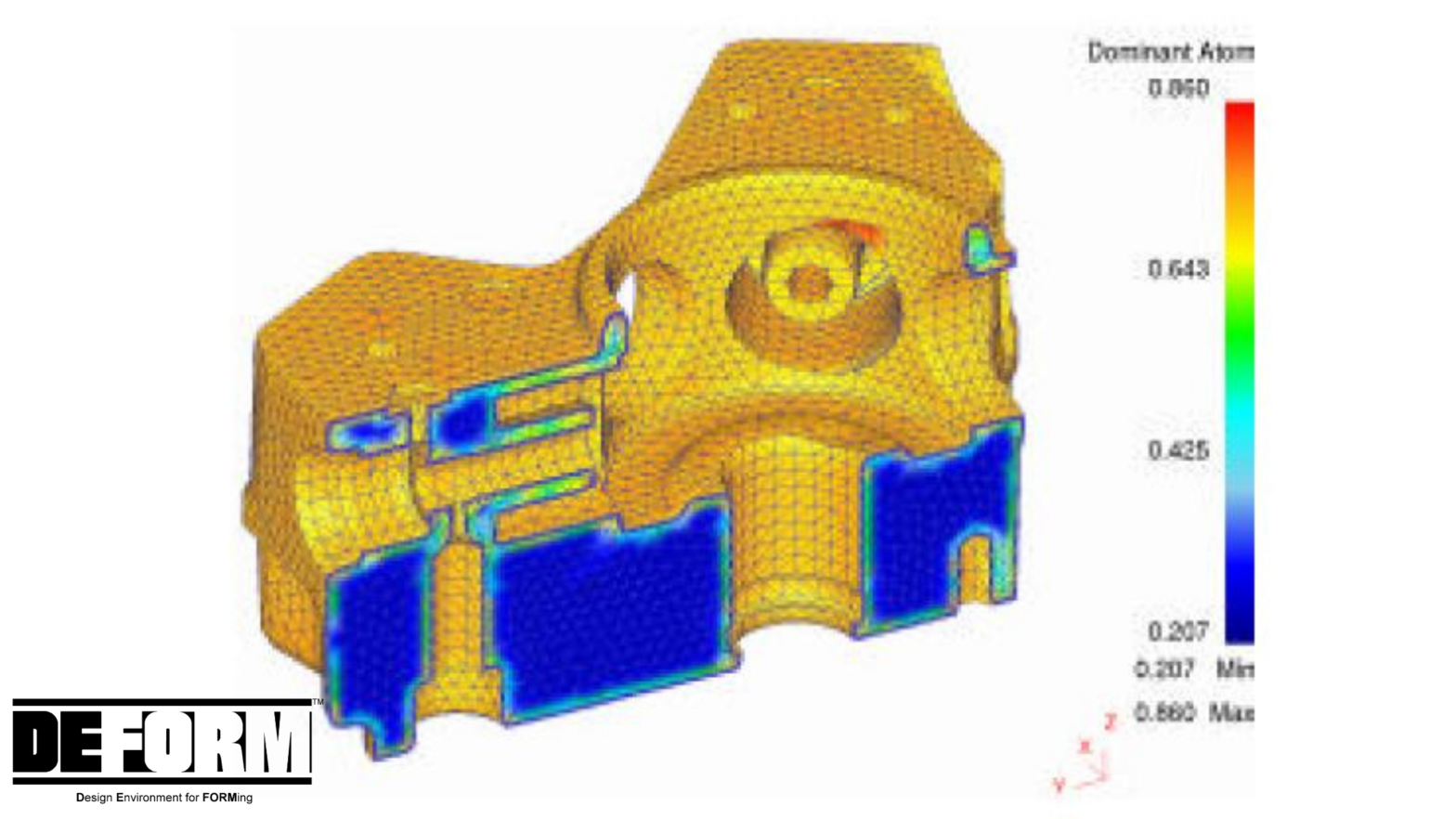
Predicting and managing heat treatment distortion of complex parts is a huge challenge. DEFORM-HT is a powerful tool for simulating heat treatment processes. The system predicts heat treat distortion, residual stresses and phase volume fraction.
Heat treatment modeling helps to achieve hardness and strength requirements while minimizing heat treat distortion and residual stresses.
Kistler-IGeL GmbH, the DEFORM distributor in Germany, worked with Rob. Bosch GmbH, DaimlerChrysler AG, Institute of Material Science and Engineering of Karlsruhe and other partners on a Computer Aided Simulation of Heat Treatment project (CASH), funded by the German Federal Ministry for Education and Research. The objective was to establish a modeling methodology for the heat treatment of complex parts.
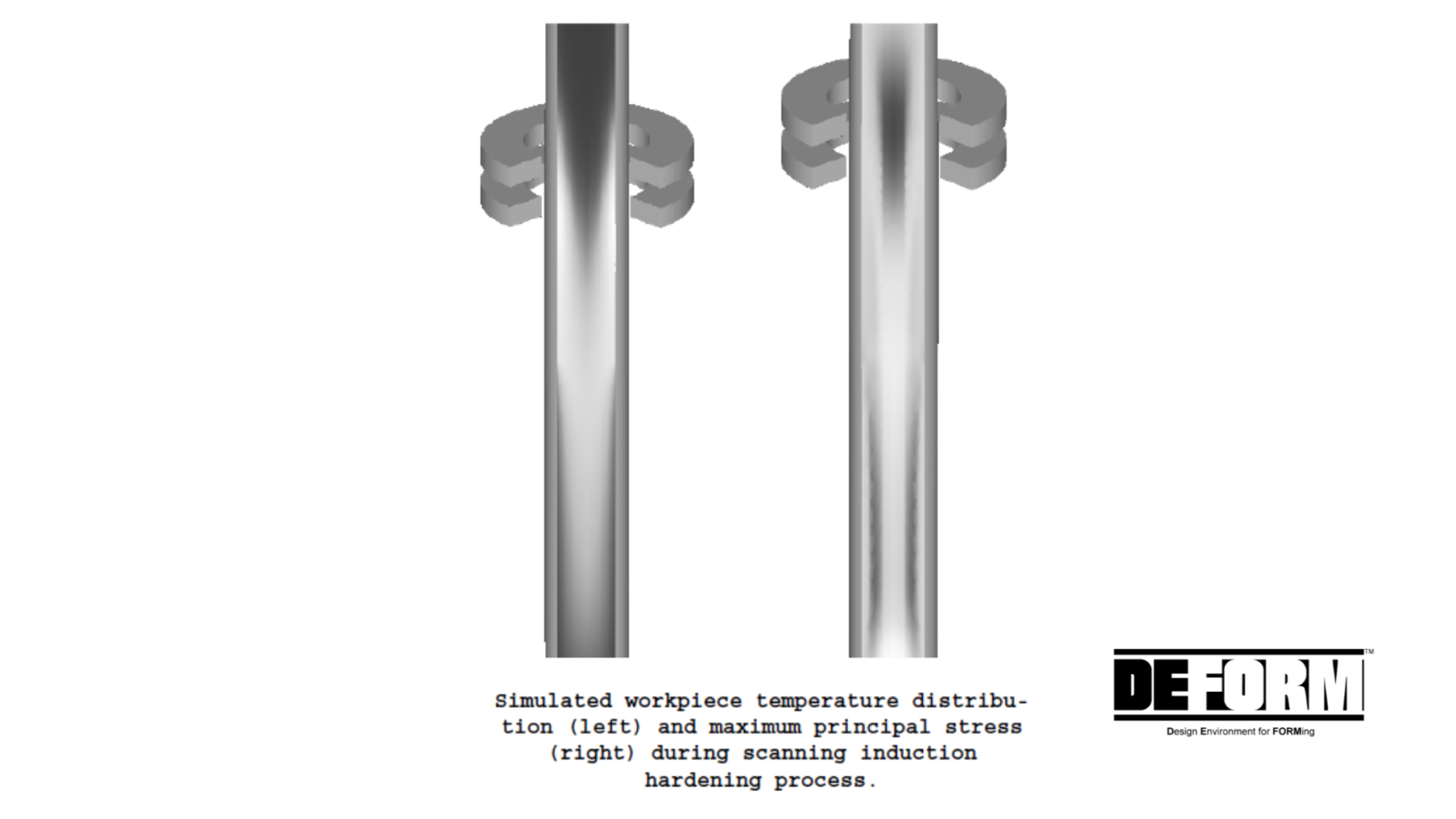
The DEFORM™ predicted temperature-time variations at the exit of the coil were very close to those measured via optical pyrometer in the actual process.
Applying boundary conditions to lock one end of the shaft and allow the other end to move freely facilitated the prediction of axial dilatation.
Predictions from DEFORM™-HT can provide designers and metallurgists with valuable information on the scanning induction hardening process. Shaft temperature, case depth, residual stresses and resultant distorted geometry are just some of the results available from simulation.
In addition, induction coil design can be facilitated by the DEFORM™-HT system.
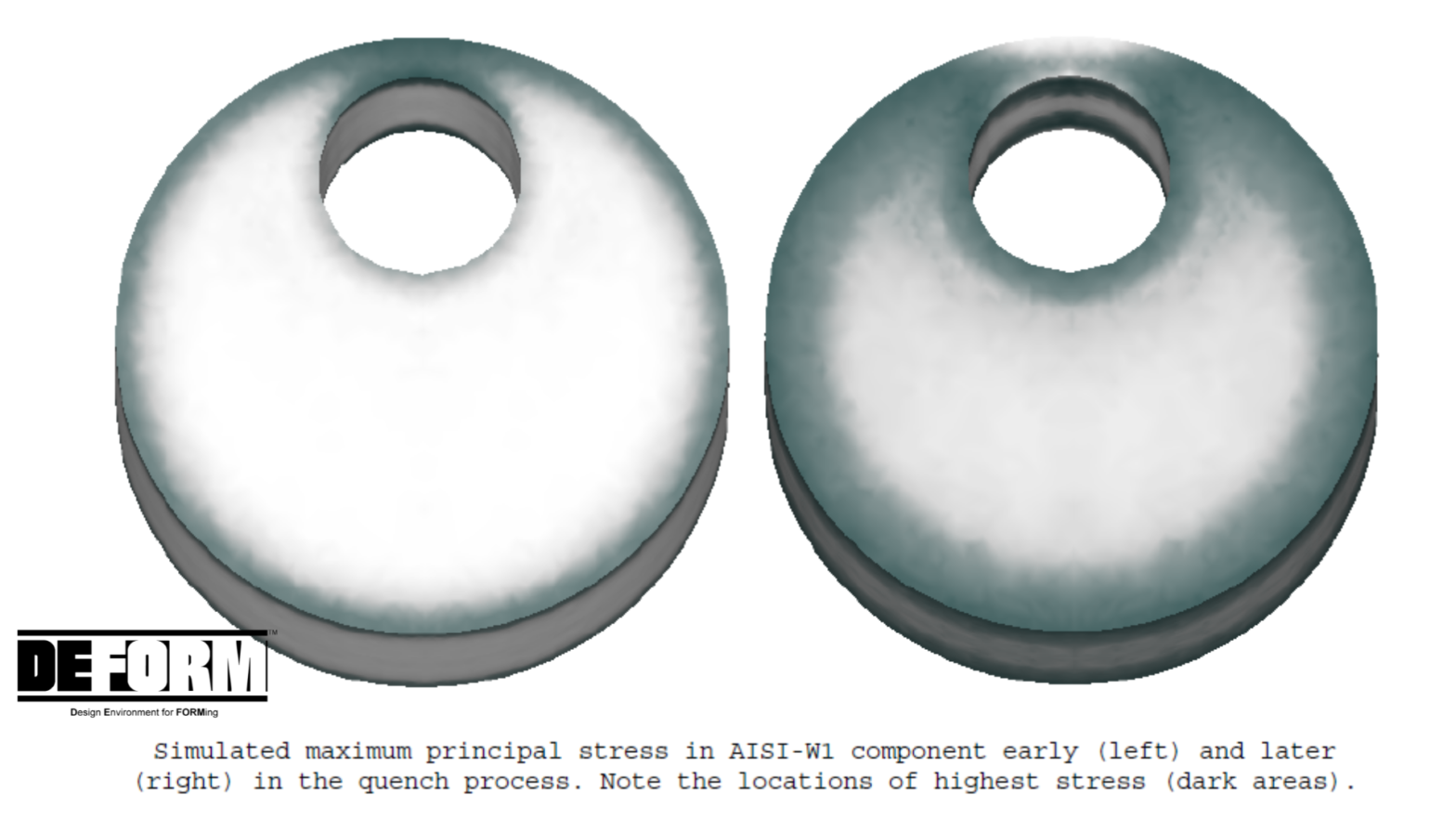
DEFORM™-HT provides the environment for simulating quench processes and highlighting the susceptibility of cracking. Modified alloy composition, quenchant properties and process conditions may be analyzed on the computer without interrupting production schedules. In addition, fracture mechanics may be incorporated to determine the mode of failure of the cracking.
Read More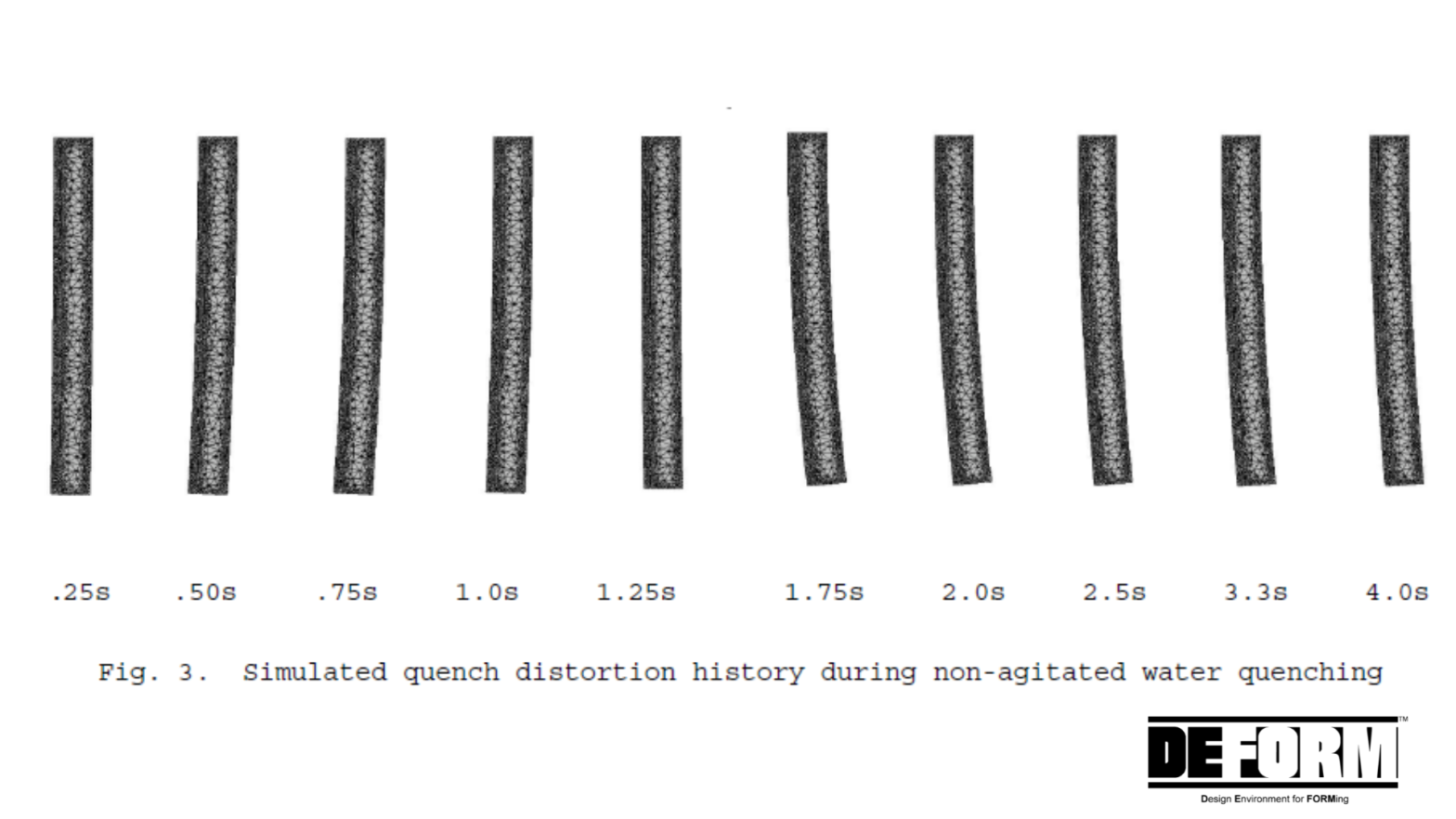
Quench distortion during heat treatment is a commonly encountered problem in metal processing industries. It is considered extremely complex and is attributed to material and thermal properties of the workpiece, and quenchant properties. Phase transformations in steels further complicate the phenomenon.
It was observed that during quenching, steel shafts tended to distort more severely if they contained keyways. Non-uniform cooling due to the nonaxisymmetric geometry may have been responsible for inducing the additional distortion.
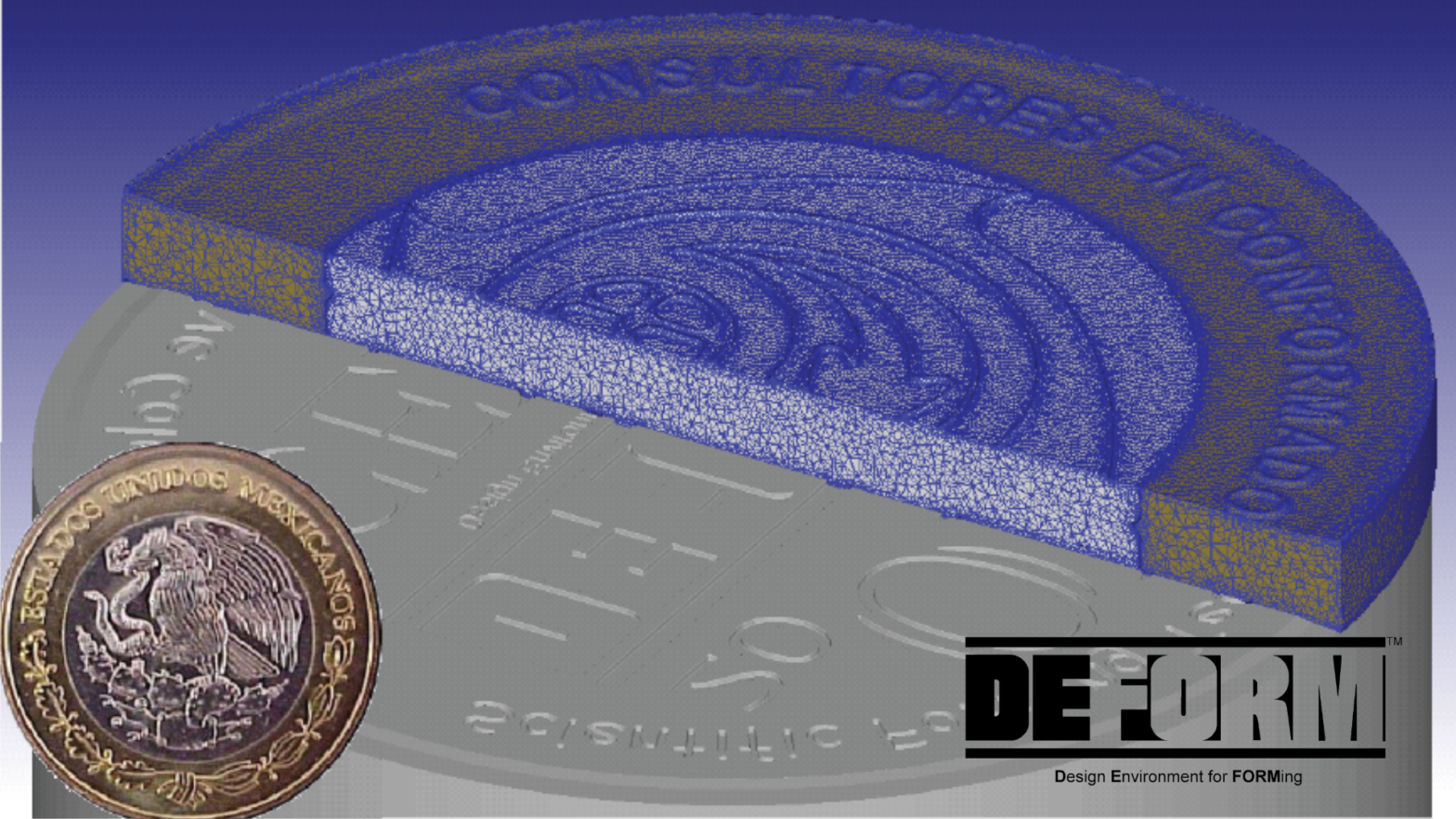
the DEFORM Simulation Software is the only one of its kind capable of replicating the coining of a coin, without wasting material and with real results. ....
Read More